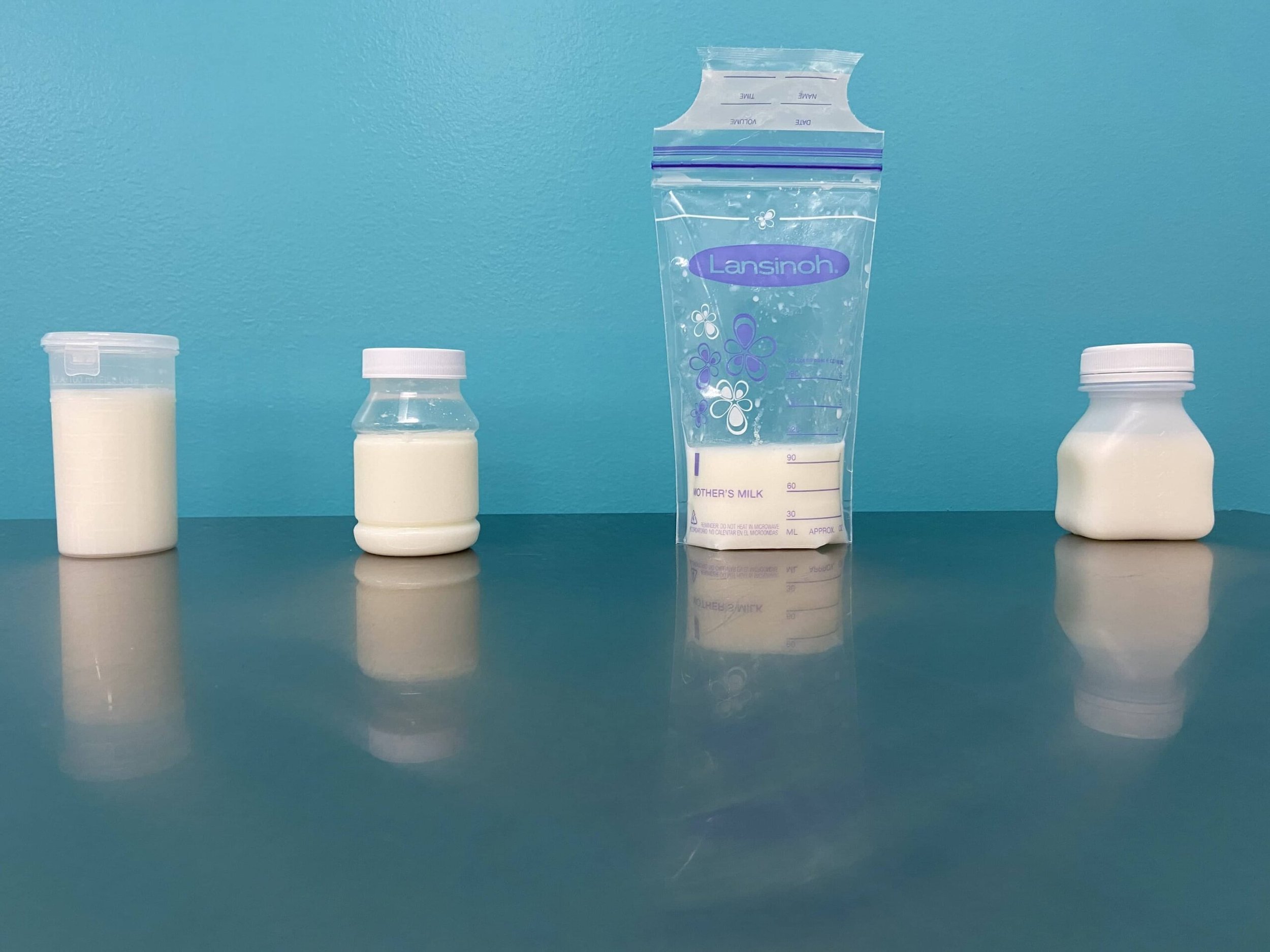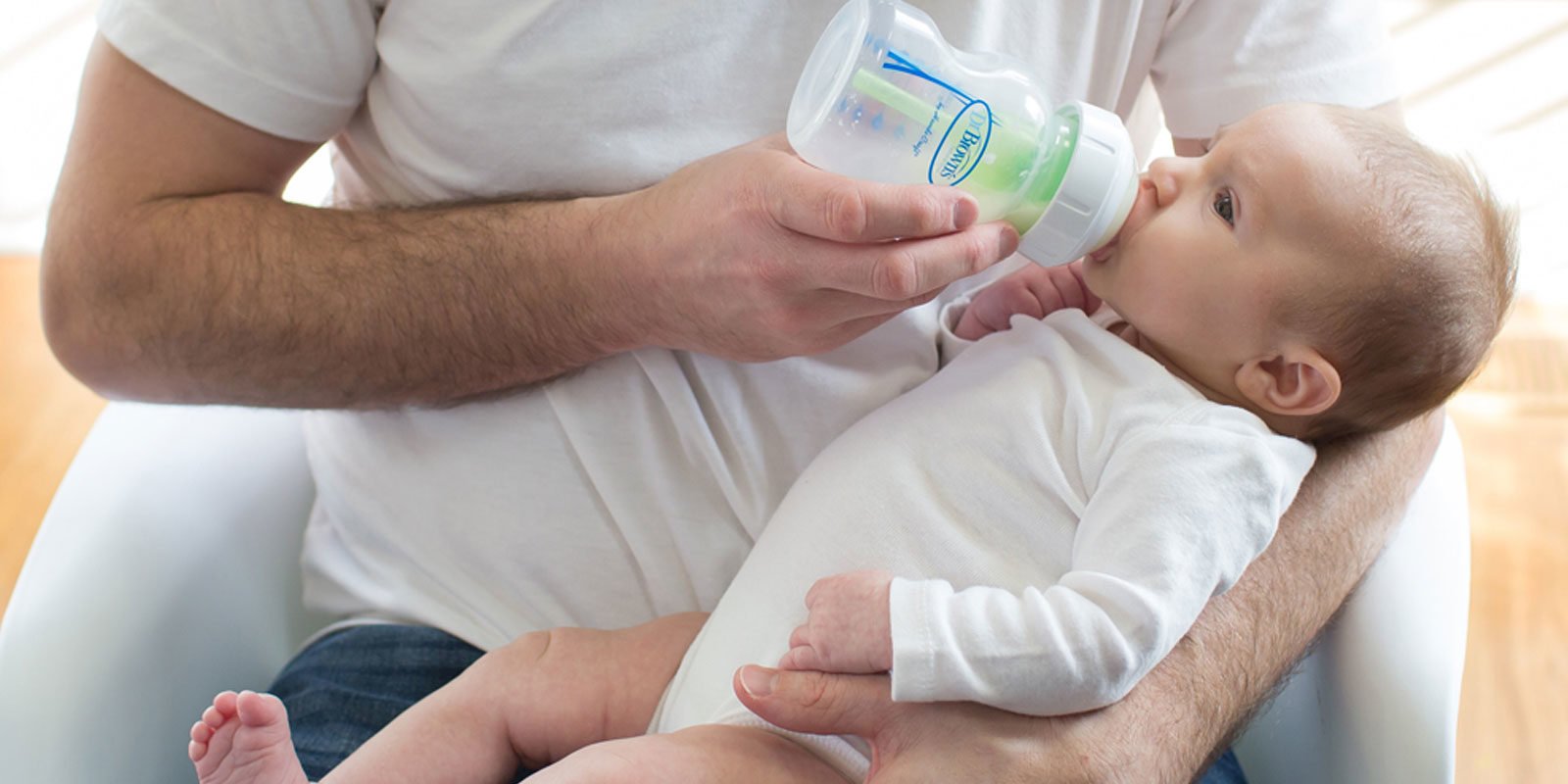Guidelines for Handling Formula or Breast Milk
Essential Tips for Parents
Discover > Healthy Living Through Food > Guidelines for Handling Formula or Breast Milk
Feeding a baby is vital for their growth and well-being, with the choice between formula and breast milk being a personal one. Regardless of the choice, it's crucial to follow guidelines for proper handling, storage, and preparation to ensure the baby's health and safety. Breast milk offers numerous benefits with tailored nutrients and antibodies, while formula is a suitable alternative designed to mimic breast milk's essential nourishment when breastfeeding isn't possible.
When it comes to storing breast milk and baby food, freezing breast milk is a common practice to ensure both remain fresh and readily available for your baby's needs. Thaw breast milk and prepared infant formula in the refrigerator or under cool, running water, never using a microwave to avoid hot spots. Remember to store expressed breast milk properly by freezing it in small portions, as breast milk expands when frozen. Never refreeze breast milk after thawing, and use the oldest breast milk first to maintain freshness. When transporting these items, consider using frozen ice packs to keep them at a safe temperature, especially when on the go. These practices will help you provide the best nutrition for your little one.
Following proper guidelines for handling both freshly expressed breast milk and formula is critical to prevent contamination and spoilage. Handling encompasses appropriate storage, thawing, warming, and preparation to ensure the baby receives adequate nutrition while prioritizing safety.
Understanding Breast Milk and Formula
Breast milk is the natural food source for infants, providing essential nutrients for growth and development. It contains a balanced blend of proteins, fats, carbohydrates, vitamins, and minerals. Breast milk also contains important immune-boosting substances that help protect babies from infections and illnesses.
Formula, on the other hand, is a manufactured product that attempts to replicate the nutritional composition of breast milk. It is typically made from cow's milk, but can also be made from other sources such as soy or goat's milk. The formula is fortified with vitamins and minerals to meet the nutritional needs of infants. While it may not have all of the immune-boosting properties of breast milk, it can still offer a nutritionally adequate alternative for infants who cannot receive breast milk for various reasons.
When comparing breast milk and formula, it's important to keep in mind that every baby's needs are different. Some infants may have difficulty digesting certain proteins or lactose in formula, while others may have allergies or sensitivities to ingredients found in breast milk. Health professionals often recommend breastfeeding as the preferred method for infant feeding, but in cases where breastfeeding is not possible or desired, formula can be a suitable alternative.
Proper handling of breast milk and formula is crucial to ensure infant safety and maintain the nutritional quality of the milk. Here are some key guidelines:
Storage: Both breast milk and formula should be stored in clean, sealed containers (preferably made of glass or BPA-free plastic) in the refrigerator. Breast milk can be stored for up to 4 days in the refrigerator, while formula should be used within 24 hours of preparation. For longer storage, both breast milk and formula can be frozen, with breast milk lasting up to 6 months and formula for up to one month.
Warming: To warm breast milk or formula, place the container in warm water or use a bottle warmer. Avoid using a microwave, as it can create hot spots and destroy nutrients in the milk. Test the temperature on the inside of your wrist before feeding to ensure it's not too hot.
Preparation: When preparing the formula, always follow the manufacturer's instructions and use the correct amount of water to powder ratio. Use sterilized water or boil tap water for at least 1 minute before mixing with the formula powder. Do not add extra water or dilute formula, as this can lead to inadequate calorie and nutrient intake.
Cleaning: Wash your hands thoroughly before handling breast milk or formula and ensure that all bottles, nipples, and equipment used for feeding are properly sterilized.
Benefits of Breast Milk
Nutritional Advantage
Breast milk is considered the gold standard for infant nutrition, providing the ideal balance of nutrients for a baby's growth and development. It contains the perfect combination of proteins, fats, carbohydrates, and vitamins necessary for a baby's early stages of life. The composition of breast milk adapts over time to meet the changing needs of a developing infant. For example, colostrum, the first milk produced after birth, is higher in protein and immune factors, while mature milk has a higher fat content to support energy needs and brain development.
Natural Immunity Boost
Breast milk is not only a source of nutrition but also provides essential immune protection for infants. It contains antibodies, immune cells, and enzymes that help protect a baby from infections and illnesses, particularly in the first months of life when their immune system is still developing. Breast milk also contains substances that promote the development of a healthy gut microbiome, which further contributes to an infant's developing immunity. These immune-protective factors cannot be replicated in infant formula, making breast milk a unique and valuable source of natural immunity for babies.
Importance of Formula
Nutritional Content
The formula is designed to closely mimic the nutritional content of breast milk, ensuring that infants receive essential vitamins, minerals, and macronutrients necessary for their growth and development. Iron-fortified formulas in particular can help reduce the risk of iron deficiency anemia in infants who do not receive sufficient iron from breast milk.
Moreover, specialty formulas are also available for infants with specific dietary needs or allergies. These include hypoallergenic and lactose-free formulas, which cater to infants with cow's milk protein allergy or lactose intolerance respectively.
Ease of Use
Formula feeding offers several advantages in terms of convenience and flexibility. Preparing formulas simply involves mixing the right proportions of water and formula powder or using ready-to-feed liquid formulas. This allows caregivers to share feeding duties, giving mothers additional time and opportunities for rest and self-care.
Additionally, formula-fed infants typically require feeding less frequently than breastfeeding infants, as formula tends to be digested slower. This can provide a more predictable feeding schedule for caregivers and ease the transition to childcare or work arrangements.
The formula holds an important role in infant nutrition as it provides essential nutrients to support growth and development, caters to specific dietary needs, and offers convenience and flexibility to caregivers.
Storage Guidelines
Breast Milk Storage
Breast milk can be stored safely for different durations depending on the temperature conditions. Follow these guidelines when storing breast milk:
Room temperature (up to 77°F/25°C): Breast milk can be stored for up to 4 hours.
Refrigerator (39°F/4°C or colder): Breast milk can be stored for up to 4 days.
Freezer (0°F/-18°C or colder): Breast milk can be stored for up to 6 months.
When storing breast milk, use clean, airtight containers or breast milk storage bags. Label each container with the date and, if necessary, the child's name.
To thaw frozen breast milk, place it in the refrigerator or under cool running water until it has reached the desired temperature. Never use microwaves to thaw or heat breast milk, as this can create hot spots and destroy its nutrients.
Formula Storage
Formula storage guidelines depend on whether the formula is powdered, concentrated liquid, or ready-to-feed. Follow these rules when storing the formula:
Unopened canned formula: Store it in a cool, dry place until the expiration date on the label.
Opened canned formula: Cover and store it in the refrigerator for up to 48 hours. Do not store it in the can; instead, transfer it to a clean, airtight container.
Powdered formula:
Mix only the amount needed for each feeding.
Once mixed, use the prepared formula within 1 hour or store it in the refrigerator for up to 24 hours.
Discard any remaining prepared formula after 24 hours.
Concentrated liquid and ready-to-feed formula:
Once opened, use the formula within 48 hours or according to the manufacturer's instructions.
Prepared bottles can be stored in the refrigerator for 24 hours. Discard any remaining formula after that time.
When heating formula, use a bottle warmer or warm water bath. Test the temperature before feeding to ensure it is not too hot for the baby.
Safety Measures
Proper Handling
It is essential to follow specific guidelines for handling formula or breast milk to ensure the baby's safety and well-being. Always wash your hands thoroughly before handling breast milk or preparing formula. Use clean, sanitized bottles and storage containers to avoid contamination.
When storing breast milk, it should be kept in a cool and dark place, such as a refrigerator. Keep it at the back of the fridge where the temperature remains most stable. It is crucial to label each container with the date it was pumped to ensure freshness. Breast milk can be stored under the following conditions:
Room temperature: up to 4 hours
Refrigerator: up to 4 days
Freezer: up to 6 months
Formula, on the other hand, should be prepared according to the manufacturer's instructions and served immediately. If a baby cannot consume it within an hour, discard any remaining formula to reduce the risk of bacterial contamination.
Hygiene Practices
Maintaining proper hygiene is critical when handling formula or breast milk. Ensure that all the surfaces and tools used in the preparation and storage process are clean and sanitized to prevent contamination. Below are some tips:
Wash your hands thoroughly with soap and water for at least 20 seconds before handling breast milk or preparing formula.
Clean and sterilize bottles, nipples, caps, and other feeding equipment before use.
Use a clean towel or a tissue to dry your hands and avoid touching surfaces that may have come into contact with germs.
Maintain cleanliness in the breast pump parts and milk storage containers by following the manufacturer's cleaning instructions and sanitizing them regularly.
Feeding Guidelines
Breastfeeding Tips
Feed on demand: It's essential to watch for your baby's hunger cues, such as rooting, opening their mouth, or sucking on their hand. It's best to feed them as soon as they display these signs.
Proper latch: Ensure that the baby's mouth is open wide and the lips are flanged outwards while latching onto the breast. This helps to establish a deep, comfortable, and effective latch.
Hold the baby close: Keep the baby's body inline and close to you while nursing to provide sufficient support and ensure a comfortable feeding position.
Alternate breasts: Rotate between breasts during each feeding to maintain an equal milk supply and prevent engorgement.
Burp the baby: Gently pat or rub the baby's back between feedings to release any trapped air bubbles and prevent gas-related discomfort.
Formula Feeding Tips
Follow the instructions: Prepare the formula according to the manufacturer's directions, as this will provide the appropriate nutrition and consistency for your baby.
Proper mixing: Make sure to shake or stir the formula thoroughly to avoid clumps, which can lead to incorrect measurements and potential choking hazards.
Temperature check: Test the formula's temperature by placing a few drops on your wrist to ensure it's not too hot or cold for your baby. Room temperature or slightly warm is generally preferred.
Offer feeding cues: Pay close attention to your baby's hunger cues and feed accordingly, as formula-fed infants may have different feeding patterns than breastfed ones.
Storage and handling: Unused formula should be stored in a cool and dark place, and any mixed formula that hasn't been consumed within an hour should be discarded to prevent bacterial contamination.
Recognizing Allergic Reactions
Breast Milk Allergies
Breast milk allergies are relatively rare but can occur in some infants. The most common cause is a reaction to proteins found in the mother's diet. Symptoms may include eczema, wheezing, colic, and gastrointestinal issues such as vomiting and diarrhea. To address this issue and relieve symptoms, mothers may need to modify their diets by eliminating possible allergens.
Here are some common allergens to watch out for:
Cow's milk and dairy products
Eggs
Peanuts and tree nuts (how long do nuts last?)
Soy
Wheat
It is essential to consult with a pediatrician or healthcare provider if any allergic reactions are suspected.
Formula Allergies
Formula allergies, particularly those related to cow's milk-based formulas, are more common. Signs of an allergic reaction to formula may include hives, swelling, redness, vomiting, and diarrhea. If an infant appears to be experiencing an allergic reaction, it is crucial to consult a healthcare provider to determine the best course of action.
There are several alternative formulas available on the market:
Soy-based formulas
Hydrolyzed protein formulas
Amino acid-based formulas
When selecting an alternative formula, it is vital to consult with a healthcare provider to ensure the chosen formula meets the infant's nutritional needs.
Conclusion
Proper handling of formula or breast milk is crucial in ensuring the health and well-being of infants. By adhering to established guidelines, caregivers can provide optimal nutrition while minimizing the risk of contamination or spoilage.
One key factor in handling breast milk or formula safely is maintaining proper hygiene. Washing hands before handling any feeding equipment or milk, as well as regularly sanitizing bottles, nipples, and other feeding accessories, can significantly reduce the risk of bacterial build-up.
Temperature is another important aspect to consider. Both breast milk and formula should be stored at the correct temperatures (refrigerated or frozen) to maintain quality and prevent spoilage. When warming milk for feeding, caregivers should avoid using a microwave, as this can cause uneven heating and potential burns. Instead, a bottle warmer or warm water bath is recommended.
Mixing and preparing formulas according to the manufacturer's instructions is essential for supplying infants with the right balance of nutrients. Over-diluting or incorrect preparation can lead to inadequate nutrition and even adverse health effects.
Finally, caregivers should adhere to specified usage timeframes for both breast milk and formula. Consume refrigerated breast milk within 4 days and frozen breast milk within 6 months, while using formula within 1 hour of preparation and discarding any leftovers.
Essential Tips for Handling Baby Milk. Check this Guide.
Ensure you are aware of this. Making the Right Choice for Gut health
Safe Baby Food Storage Guide. Check this out.
Take a look on Ensuring Safe Food for Children.
Hygiene Lessons for Kids: A Guide for Parents and Educators. Check this out.








